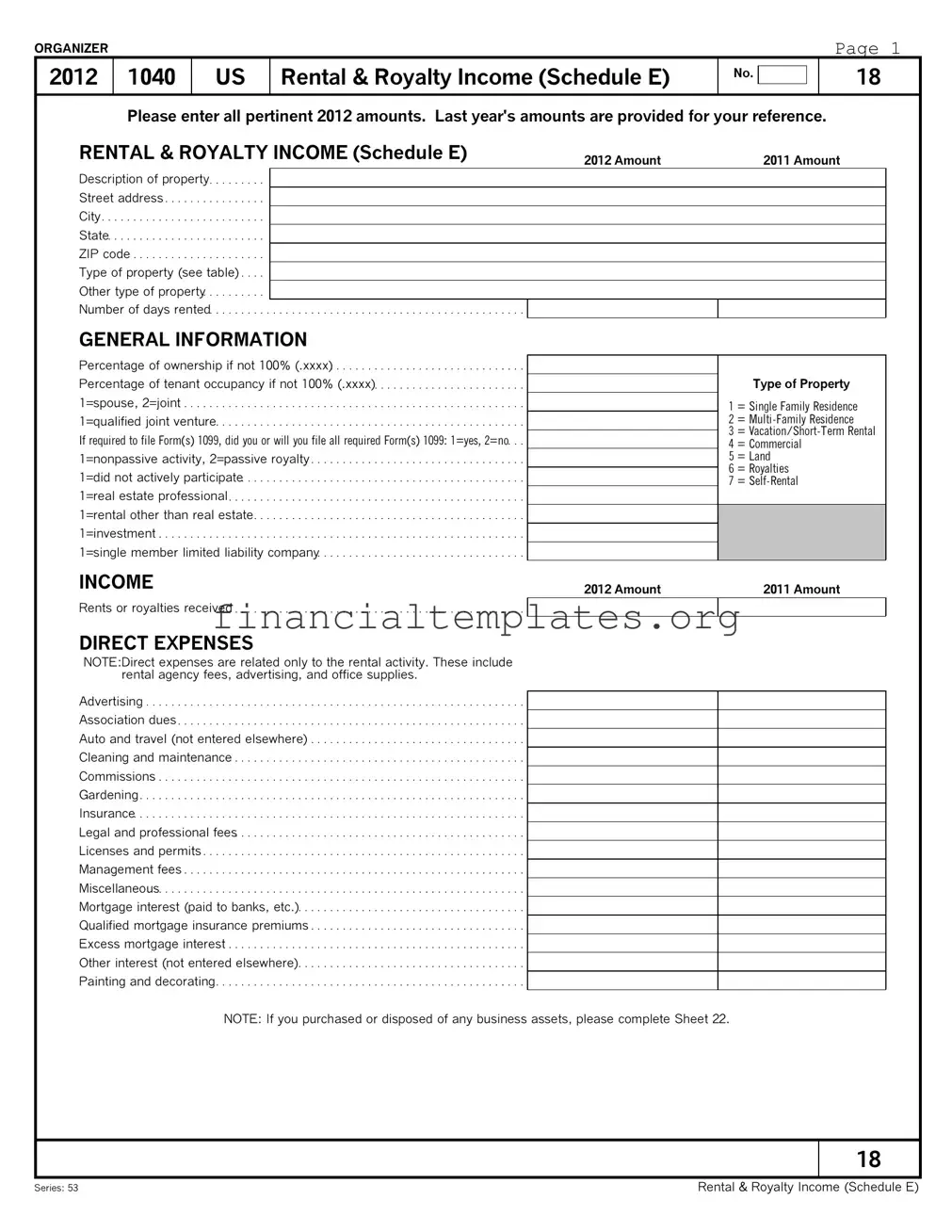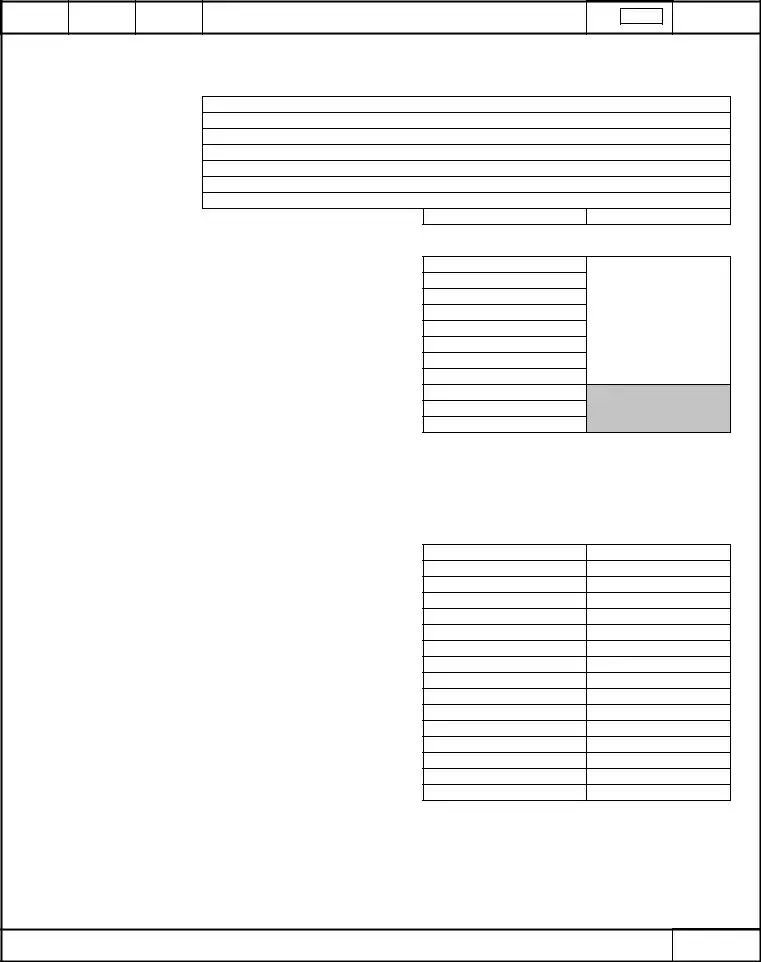The US Tax Form 1040 Schedule C is quite similar to Schedule E, primarily because both are used for reporting types of income outside of wages, salaries, and tips. While Schedule E focuses on rental and royalty income, Schedule C is utilized by sole proprietors to report profits or losses from a business they operated or a profession they practiced as a sole proprietor. Both forms detail the necessity to outline income received, as well as allowable deductions to offset that income.
IRS Form 8825, "Rental Real Estate Income and Expenses of a Partnership or an S Corporation", shares many commonalities with Schedule E. This form is used by partnerships and S corporations to report rental real estate income and expenses, very much in line with Schedule E's purpose for individual taxpayers. Like Schedule E, Form 8825 requires detailed reporting of rental income received, as well as expenses incurred in the operation of rental property.
Form 1099-MISC, "Miscellaneous Income", while not a form filed by taxpayers, is related to Schedule E in the sense that it often documents the types of income reported there. Specifically, royalty payments reported on Form 1099-MISC need to be entered on Schedule E. This showcases the interconnectedness of IRS forms, where one form's reported payments become the income reported on another individual's income tax return.
Another counterpart to Schedule E is Schedule F, "Profit or Loss From Farming", which is used by individuals to report income and expenses related to farming operations. While Schedule E centers on rental and royalty income, Schedule F focuses on the agricultural sector, demonstrating the IRS’s approach to categorizing and taxing different income sources. Both schedules allow for the detailed deduction of expenses related to generating said income.
The US Tax Form 4562, "Depreciation and Amortization", can also be connected to Schedule E, mainly through the aspect of property depreciation. Owners of rental property use Schedule E to report their income and can use Form 4562 to calculate the depreciation of their property, a key expense that reduces taxable income. This form highlights the intersection between income reporting and expense documentation in the tax filing process.
Form 8582, "Passive Activity Loss Limitations", is intricately linked with Schedule E through the passive activity income rules. Income or losses reported on Schedule E from rental activities are subject to passive activity loss rules, and Form 8582 is used to calculate the allowable loss that can be deducted. This highlights the complexity of tax law when it comes to types of income and allowable deductions.
Schedule K-1 (Form 1065), "Partner's Share of Income, Deductions, Credits, etc.", is akin to Schedule E in that it deals with income from rentals, albeit indirectly. Partners in a partnership or S corporation members receive a Schedule K-1 detailing their share of the entity's income or loss, which they then report on their own tax returns, potentially on Schedule E if it pertains to rental real estate income.
IRS Form 5471, "Information Return of U.S. Persons With Respect to Certain Foreign Corporations", while serving a different purpose, touches on the Schedule E territory by involving foreign income. Taxpayers with interests in foreign real estate that generates rental income might need to navigate both Schedule E for their US tax return and Form 5471 if the property is held through a foreign corporation.
Lastly, Schedule D, "Capital Gains and Losses", also connects with Schedule E through the disposal of rental property. When a taxpayer sells a property reported on Schedule E, any capital gain or loss from the sale is reported on Schedule D. This crossover between schedules underscores the comprehensive nature of income tax reporting and the necessity for taxpayers to understand various reporting requirements.
In summary, while Schedule E specifically addresses rental and royalty income, its interconnections with other forms highlight the intricacy of tax reporting. Understanding these relationships ensures accurate and optimized tax filings.


